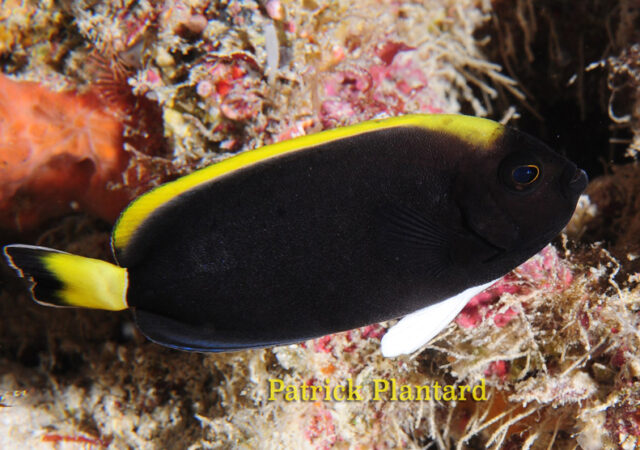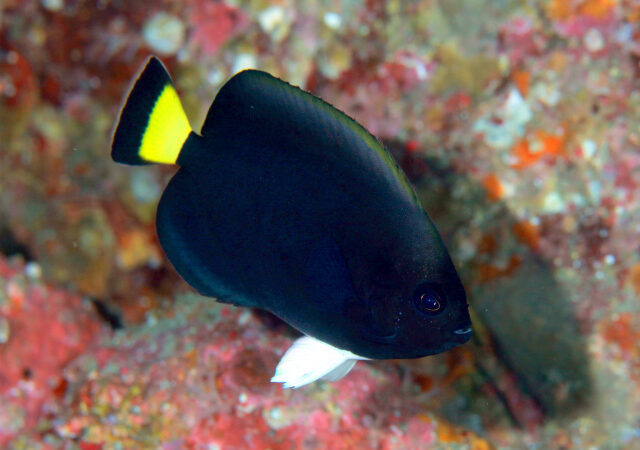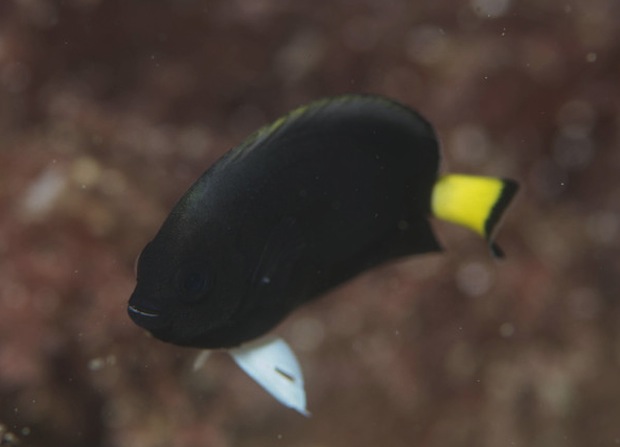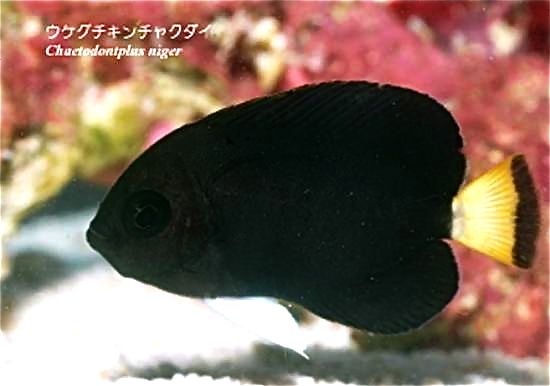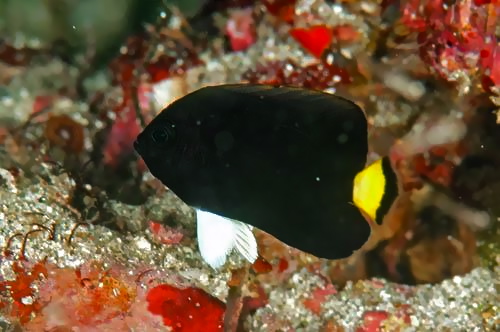The black angelfish, Chaetodontoplus niger, is a species so mysterious that it’s hard to know where to begin trying to understand it. First described from the Hongsha Islands in the South China Sea in 1965, the only modern records that this…
This is the best photo of Chaetodontoplus niger to date
For a fish that gets as big as a football, it’s a mystery why the black angelfish, Chaetodontoplus niger is scarcely ever seen much larger than a juvenile fish in size and color. We know that large adult C. niger are…
The illusionary Chaetodontoplus niger photographed again in waters of Japan
Chaetodontoplus niger is the phantom of the angelfish world, being predominantly colored an inky black; sans the yellow and white caudal and ventral fins respectively. This fish is very elusive and rare, and is almost never seen, or photographed until last…
BlueHarbor’s 2012 calendar features a captive Chaetodontoplus niger for the month of April
The month of April this year has commenced with this calendar photo of what appears to be Chaetodontoplus niger in captivity. This extremely reclusive and enigmatic fish has recently caught a break and appeared on various videos and pictures, but…
Another video of Chaetodontoplus niger shot in Japan is a remarkable coincidence
Remember that really cool juvenile Chaetodontoplus niger we posted about the last time, and the video on the same individual shortly after? What we did not know was that another video of C. niger taken in the Kashiwa Island of Japan…
Chaetodontoplus niger shows up on youtube
One of the rarest of all marine angelfish, Chaetodontoplus niger, was filmed by Japanese divers off of Kashiwajima, Kochi at 33-meters, and posted on youtube. The contrast of white and yellow fins along an all black body is quite stunning on…
Super rare Chaetodontoplus niger photographed in Oak Island, Japan
Chaetodontoplus niger is a fish so seldom seen and so little is known about, that the word rare is quite simply, an extreme understatement. It is possibly the rarest member of the Chaetodontoplus genus, along with C. ballinae. There have…


